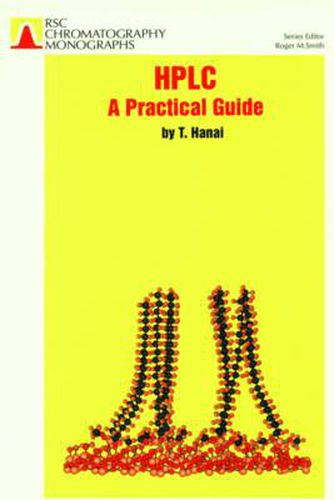Readings Newsletter
Become a Readings Member to make your shopping experience even easier.
Sign in or sign up for free!
You’re not far away from qualifying for FREE standard shipping within Australia
You’ve qualified for FREE standard shipping within Australia
The cart is loading…






How can these compounds be separated? Why was that method used? These are the two basic questions often asked by students of chromatography. HPLC: A Practical Guide provides the answers, enabling the reader to grasp the concepts of the technique using simple, representative chromatograms. Divided into six chapters, this practical guide covers basic concepts of HPLC; instrumentation; stationary phase materials; eluents; column efficiency; and the influence of physical chemistry on separations. Focusing on the basic considerations such as selection of stationary phase and eluent, rather than specific applications, sections on troubleshooting are also included. Uniquely, the descriptions of chromatographic separations are based on solubility using molecular properties, and solubility parameters are used to analyse the selections of chromatographic mode and column. Presenting the chemistry of liquid chromatography for undergraduate students, this valuable practical guide will also be useful for laboratory staff in industry and academia.
$9.00 standard shipping within Australia
FREE standard shipping within Australia for orders over $100.00
Express & International shipping calculated at checkout
How can these compounds be separated? Why was that method used? These are the two basic questions often asked by students of chromatography. HPLC: A Practical Guide provides the answers, enabling the reader to grasp the concepts of the technique using simple, representative chromatograms. Divided into six chapters, this practical guide covers basic concepts of HPLC; instrumentation; stationary phase materials; eluents; column efficiency; and the influence of physical chemistry on separations. Focusing on the basic considerations such as selection of stationary phase and eluent, rather than specific applications, sections on troubleshooting are also included. Uniquely, the descriptions of chromatographic separations are based on solubility using molecular properties, and solubility parameters are used to analyse the selections of chromatographic mode and column. Presenting the chemistry of liquid chromatography for undergraduate students, this valuable practical guide will also be useful for laboratory staff in industry and academia.